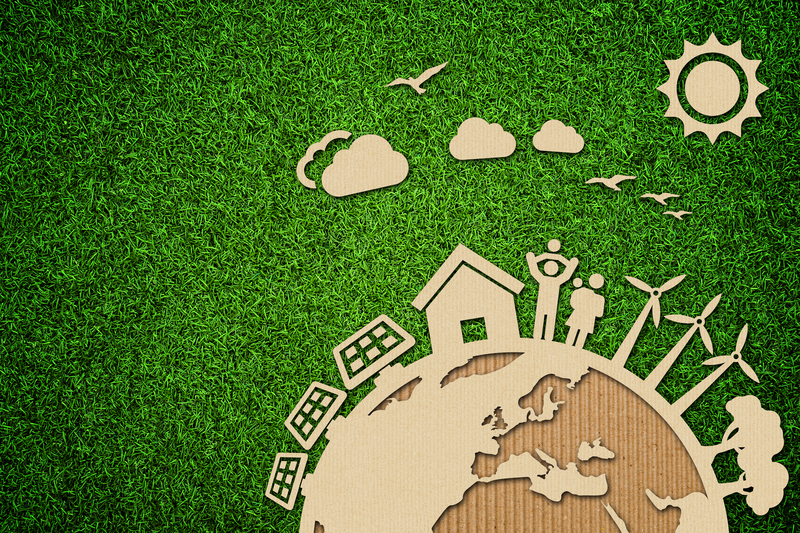Simplifying the Task of Styrofoam Cleanup
Posted on 27/06/2024
Styrofoam, also known as expanded polystyrene (EPS), is a common packaging material used for protecting fragile items during shipping. While it has its benefits in terms of cost and efficiency, it has also gained a reputation for being an environmental hazard due to its non-biodegradable nature. Styrofoam litter can be found in landfills, oceans, and even on our streets. The task of cleaning up this material can seem daunting, but with the right techniques and tools, it can be simplified. In this article, we will discuss ways to simplify the task of Styrofoam cleanup.
Understanding Styrofoam
Before we delve into the cleanup methods, it is important to understand what Styrofoam is and why it poses a threat to the environment. Styrofoam is made from petroleum-based plastic and contains toxic chemicals that can leach into the environment if not disposed of properly. It takes thousands of years to decompose and breaks down into small pieces called microplastics, which are harmful to wildlife when ingested. These lightweight pieces also easily get carried away by wind and water, causing pollution in our oceans and other natural habitats.

Proper Disposal
The first step in simplifying the task of Styrofoam cleanup is to ensure proper disposal. Many cities now have regulations in place for the proper handling of Styrofoam waste. It is important to check with your local waste management agency for guidelines on how to dispose of it correctly. Some areas have recycling facilities where Styrofoam can be dropped off for processing into new products. By following proper disposal methods, you can help reduce the amount of Styrofoam waste that ends up in our landfills and oceans.
DIY Cleanup Techniques
If you come across Styrofoam litter while on a beach or in a park, it is best to clean it up to prevent it from causing harm to the environment. However, picking up tiny pieces of Styrofoam can be a tedious and time-consuming task. Here are some DIY techniques that can help simplify the process:
1. Use a vacuum cleaner: A handheld vacuum can efficiently pick up small bits of Styrofoam without creating a mess. You can also use the hose attachment on your regular vacuum for larger pieces.
2. Create a sticky surface: Use duct tape or packing tape to create a sticky surface and press it onto the Styrofoam litter. The tape will pick up bits of Styrofoam, making cleanup easier.
3. Sweep with a broom: If you have a large quantity of Styrofoam litter, using a broom can be an effective way to gather it all together. Make sure to sweep carefully to avoid breaking the pieces into smaller ones.
Professional Cleanup Services
For larger-scale Styrofoam cleanup projects, it may be best to hire professional cleanup services. These companies have specialized equipment and methods for efficient removal of this material. They also have the resources to properly dispose of large quantities of Styrofoam waste, ensuring that it does not end up polluting our environment.
The Pros and Cons
Like any other material, Styrofoam has its advantages and disadvantages. On the one hand, it is lightweight and cost-effective for packaging purposes. On the other hand, its non-biodegradable nature and potential harm to the environment make it a major concern. By properly disposing of and cleaning up Styrofoam, we can mitigate its negative impact and still reap its benefits.
Tips for Prevention
The best way to simplify the task of Styrofoam cleanup is by preventing it from becoming litter in the first place. Here are some tips to help reduce the amount of Styrofoam waste:
1. Avoid buying products packaged with Styrofoam whenever possible.
2. Choose eco-friendly alternatives such as biodegradable packaging materials.
3. Reuse Styrofoam for packing or insulation purposes.
4. Educate others about proper disposal and the harmful effects of Styrofoam on the environment.

Takeaways
Cleaning up Styrofoam can seem like a daunting task, but by understanding its impact on the environment and following proper disposal methods, it can be simplified. DIY techniques and hiring professional cleanup services can also make the process more manageable. By taking preventive measures, we can reduce the amount of Styrofoam waste and protect our planet.
Conclusion
In conclusion, Styrofoam may seem like a convenient solution for packaging, but its negative impact on the environment cannot be ignored. By disposing of it properly and taking preventive measures, we can simplify the task of Styrofoam cleanup and contribute to a cleaner and healthier planet for future generations. Let's do our part in reducing this environmental hazard and finding more sustainable alternatives for packaging materials.

